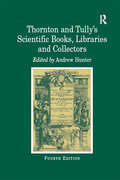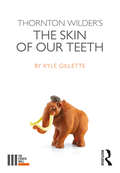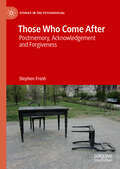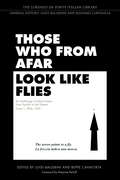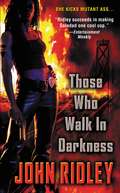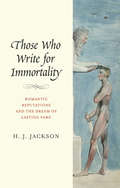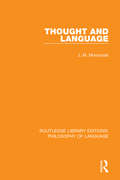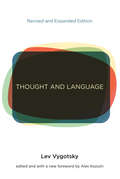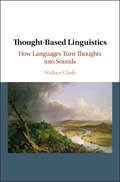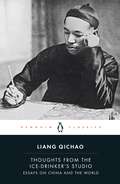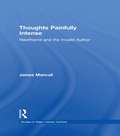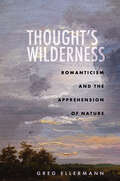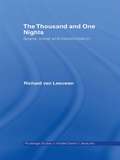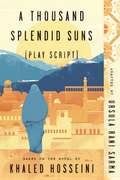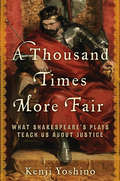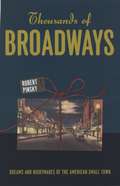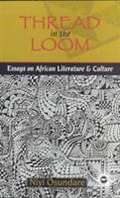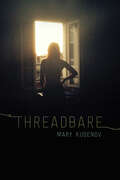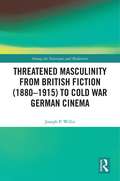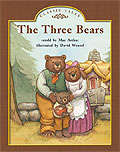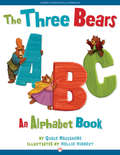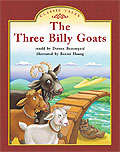- Table View
- List View
Thornton and Tully's Scientific Books, Libraries and Collectors: A Study of Bibliography and the Book Trade in Relation to the History of Science
by Andrew HunterIn the 25 years since the last edition of Thornton and Tully’s Scientific Books, Libraries and Collectors was published, scientific publishing has mushroomed, developed new forms, and the academic discipline and popular appreciation of the history of science have grown apace. This fourth edition discusses these changes and ponders the implications of developments in publishing at the end of the twentieth century, while concentrating its gaze upon the dissemination of scientific ideas and knowledge from Antiquity to the industrial age. In this shift of focus it departs from previous editions, and for the first time a chapter on Islamic science is included. Recurrent themes in several of the ten essays in the present volume are the definition of ’science’ itself, and its transmutation by publishing media and the social context. Two essays on the collecting of scientific books provide a counterpoint, and the book is grounded on a rigorous chapter on bibliographies. The timely publication of Scientific Books, Libraries and Collectors comes at the coincidence of the advent of electronic publishing and the millennium, a dramatic moment at which to take stock.
Thornton Wilder's The Skin of our Teeth (The Fourth Wall)
by Kyle Gillette"Ladies and gentlemen, I’m not going to play this particular scene tonight." - Sabina Thornton Wilder’s The Skin of Our Teeth (1942) telescopes an audacious stretch of western history and mythology into a family drama, showing how the course of human events operates like theatre itself: constantly mutable, vanishing and beginning again. Kyle Gillette explores Wilder’s extraordinary play in three parts. Part I unpacks the play’s singular yet deeply interconnected place in theatre history, comparing its metatheatrics to those of Stein, Pirandello and Brecht, and finding its anticipation of American fantasias in the works of Vogel and Kushner. Part II turns to the play’s many historic and mythic sources, and examines its concentration of western progress and power into the model of a white, American upper-middle-class nuclear family. Part III takes a longer view, tangling with the play’s philosophical stakes. Gillette magnifies the play’s ideas and connections, teasing out historical, theoretical and philosophical questions on behalf of readers, scholars and audience members alike.
Those Who Come After: Postmemory, Acknowledgement and Forgiveness (Studies in the Psychosocial)
by Stephen FroshThis book explores the legacies of suffering in relation to ‘those who come after’ – the descendants of victims, survivors and perpetrators of traumatic events. It draws on recent discussions of ‘postmemory’ and ‘haunting’ that are concerned mainly with the transgenerational impact of personal and social trauma. It examines how we are connected to past events for which we have no direct responsibility yet in which we might in some way be ‘implicated’ and it asks how we might attain a position of active witnessing that helps resolve the suffering of others. Those Who Come After includes vivid accounts of witnessing from a variety of perspectives, ranging from Biblical and Jewish stories to contemporary art and music. The book draws on psychosocial studies and psychoanalysis to help make sense of this material and to develop an understanding of acknowledgment and responsibility that is both ethical and emancipatory. Those Who Come After will be of great interest to readers in psychosocial studies and psychoanalysis and to all who are concerned with the question of how to put past suffering to rest.
Those Who from Afar Look Like Flies: An Anthology of Italian Poetry from Pasolini to the Present, Tome 1, 1956-1975
by Luigi Ballerini Giuseppe CavatortaThose Who from Afar Look Like Flies is an anthology of poems and essays that aims to provide an organic profile of the evolution of Italian poetry after World War II. Beginning with the birth of Officina and Il Verri, and culminating with the crisis of the mid-seventies, this tome features works by such poets as Pasolini, Pagliarani, Rosselli, Sanguineti and Zanzotto, as well as such forerunners as Villa and Cacciatore. Each section of this anthology, organized chronologically, is preceded by an introductory note and documents every stylistic or substantial change in the poetics of a group or individual. For each poet, critic, and translator a short biography and bibliography is also provided.
Those Who Walk in Darkness
by John RidleyIn the near future, the world has become home to certain people with amazing genetic structures-giving them powers that make them frighteningly superior to normal humans.
Those Who Write for Immortality
by H. J. JacksonGreat writers of the past whose works we still read and love will be read forever. They will survive the test of time. We remember authors of true genius because their writings are simply the best. Or . . . might there be other reasons that account for an author's literary fate? This original book takes a fresh look at our beliefs about literary fame by examining how it actually comes about. H. J. Jackson wrestles with entrenched notions about recognizing genius and the test of time by comparing the reputations of a dozen writers of the Romantic period--some famous, some forgotten. Why are we still reading Jane Austen but not Mary Brunton, when readers in their own day sometimes couldn't tell their works apart? Why Keats and not Barry Cornwall, who came from the same circle of writers and had the same mentor? Why not that mentor, Leigh Hunt, himself? Jackson offers new and unorthodox accounts of the coming-to-fame of some of Britain's most revered authors and compares their reputations and afterlives with those of their contemporary rivals. What she discovers about trends, champions, institutional power, and writers' conscious efforts to position themselves for posterity casts fresh light on the actual processes that lead to literary fame.
Thought and Language
by J. M. MoravcsikOriginally published in 1990, this book centres on a certain way of surveying a variety of theories of language, and on outlining a new proposal of meaning within the framework set by the survey. One of the key features of both survey and proposal is the insistence on the need to locate theories of language within a large framework that includes questions about the nature of thought and about general ontological questions as well. The book deals in an interconnected way with both very general and specific issues. At one end of this spectrum there are discussions of the contrast between realist and nominalist ontologies, while at the other are analyses of specific lexical items of English.
Thought and Language, revised and expanded edition
by Lev S. VygotskyA new edition of a foundational work of cognitive science that outlines a theory of the development of specifically human higher mental functions.Since it was introduced to the English-speaking world in 1962, Lev Vygotsky's Thought and Language has become recognized as a classic foundational work of cognitive science. Its 1962 English translation must certainly be considered one of the most important and influential books ever published by the MIT Press. In this highly original exploration of human mental development, Vygotsky analyzes the relationship between words and consciousness, arguing that speech is social in its origins and that only as children develop does it become internalized verbal thought.In 1986, the MIT Press published a new edition of the original translation by Eugenia Hanfmann and Gertrude Vakar, edited by Vygotsky scholar Alex Kozulin, that restored the work's complete text and added materials to help readers better understand Vygotsky's thought. Kozulin also contributed an introductory essay that offered new insight into Vygotsky's life, intellectual milieu, and research methods. This expanded edition offers Vygotsky's text, Kozulin's essay, a subject index, and a new foreword by Kozulin that maps the ever-growing influence of Vygotsky's ideas.
Thought-Based Linguistics: How Languages Turn Thoughts into Sounds
by Wallace ChafeThe extent to which language is inseparable from thought has long been a major subject of debate across linguistics, psychology, philosophy, and other disciplines. In this study, Wallace Chafe presents a thought-based theory of language that goes beyond traditional views that semantics, syntax, and sounds are sufficient to account for language design. Language begins with thoughts in the mind of a speaker and ends by affecting thoughts in the mind of a listener. This obvious observation is seldom incorporated in descriptions of language design for two major reasons. First, the role of thought is usually usurped by semantics. But semantic structures are imposed on thought by languages and differ from one language to another. Second, thought does not lend itself to familiar methods of linguistic analysis. Chafe suggests ways of describing thoughts, traces the path languages follow from thoughts to sounds, and explores ways in which thoughts are oriented in time, memory, imagination, reality, and emotions.
The Thought of Nirad C. Chaudhuri
by Ian AlmondIn this critical examination of the famous South Asian thinker Nirad C. Chaudhuri (1897–1999), a notorious Anglophile and defender of Empire, Ian Almond analyses the factors that played a role in the evolution of his thought. Almond explores how Empire creates 'native informants', enabling local subjects to alienate themselves from and even abhor their own cultures. Through analysis of Chaudhuri's views on Islam, his use of the archive, moments of melancholy and loss in his writing, and his opinions on Empire, Almond dissects the constitution of an Indian writer and locates the precise ways in which Chaudhuri was able to produce the kind of discourses he did, exploring how conservative, pro-Western intellectuals are formed in postcolonial environments. A strong comparative element places Chaudhuri's views in the context of conservative intellectuals from Latin America, the Middle East and South Asia, concluding with a consideration of present-day 'native informants' from these regions.
Thoughts From the Ice-Drinker's Studio: Essays on China and the World
by Liang Qichao'China's first iconic modern intellectual. His lucid and prolific writings, touching on all major concerns in his own time and anticipating many in the future, inspired several generations of thinkers' Pankaj Mishra'A country does not become corrupt and weak overnight. Rather, we are now reaping the evil harvest of what previous generations sowed.'The power, anger and fluency of Liang Qichao's writings make him one of the towering figures in modern Chinese literature. He saw his great, almost unmanageable task as an attempt to write China into the new era - to provide an ancient country, devastated by civil war and foreign predators, with the intellectual equipment to renew itself.Liang said that he wrote from an 'ice-drinker's studio', implying that underneath his dispassionate, disabused and rational tone lay an ardour and passion which only ice could cool. China could only recover through a clear-sighted, informed understanding of its enemies - and by engaging in a thorough-going self-critique. Liang did not propose aping the West but taking only what China needed to 'renew the people' and create 'new citizens'. Then China would be able to expel its invaders, reform its society and become a great power once more.This selection of pieces shows Liang's extraordinary range and the burning sense of mission which drove him on, attempting to galvanize and refresh an entire nation. Blending together Confucianism, Buddhism and the Western Enlightenment, Liang's ideas about nation, democracy, and morality had a profound impact on Chinese visions of the political order, though the China that eventually emerged from the further disasters of the 1930s and 1940s would be a very different one.
Thoughts Painfully Intense: Hawthorne and the Invalid Author (Studies in Major Literary Authors)
by James MancallFirst Published in 2002. Routledge is an imprint of Taylor & Francis, an informa company.
Thought’s Wilderness: Romanticism and the Apprehension of Nature
by Greg EllermannWhile much recent ecocriticism has questioned the value of nature as a concept, Thought's Wilderness insists that it is analytically and politically indispensable, and that romanticism shows us why. Without a concept of nature, Greg Ellermann argues, our thinking is limited to the world that capitalism has made. Defamiliarizing the tradition of romantic nature writing, Ellermann contends that the romantics tried to circumvent the domination of nature that is essential to modern capitalism. As he shows, poets and philosophers in the period such as Immanuel Kant, G. W. F. Hegel, Mary Wollstonecraft, William Wordsworth, and Percy Shelley were highly attuned to nature's ephemeral, ungraspable forms: clouds of vapor, a trace of ruin, deep silence, and the "world-surrounding ether." Further, he explains how nature's vanishing—its vulnerability and its flight from apprehension—became a philosophical and political problem. In response to a nascent industrial capitalism, romantic writers developed a poetics of wilderness—a poetics that is attentive to fleeting presence and that seeks to let things be. Trying to imagine what ultimately eludes capture, the romantics recognized the complicity between conceptual and economic domination, and they saw how thought itself could become a technology for control. This insight, Ellermann proposes, motivates romantic efforts to think past capitalist instrumentality and its devastation of the world. Ultimately, this new work undertakes a fundamental rethinking of the aesthetics and politics of nature.
The Thousand and One Nights: Space, Travel and Transformation (Routledge Studies in Middle Eastern Literatures)
by Richard van LeeuwenThis volume discusses The Thousand and One Nights' themes of space and travel showing how they are used not only as a setting in which the story unfolds, but also as the dynamic force which propels the heroes and the story to the final dénouement. These events often symbolize a process of transformation, in which the hero has to search for his destined role or strive to attain the object of his desire. In this way, themes of travel are the narrative backbone of stories of various genres including love, religion, magic and adventure. This book not only gives a fresh approach to many stories of the collection, but also proposes new insights in the nature of The Thousand and one Nights as a self-reflexive narrative and is essential reading for scholars of Arabic literature.
A Thousand Pieces of Gold: Growing Up Through China's Proverbs
by Adeline Yen MahIn this poignant memoir the New York Times bestselling author of Falling Leaves, Adeline Yen Mah, provides a fascinating window into the history and cultural soul of China. Combining personal reflections, rich historical insights, and proverbs handed down to her by her grandfather, Yen Mah shares the wealth of Chinese civilization with Western readers. Exploring the history behind the proverbs, she delves into the lives of the first and second emperors and the two rebel warriors who changed the course of Chinese life, adding stories from her own life to beautifully illustrate their relevance and influence today.
A Thousand Splendid Suns (Play Script): Based on the novel by Khaled Hosseini
by Ursula Rani SarmaThe script for the stage production of the bestselling Khaled Hosseini novel A Thousand Splendid Suns, as adapted by playwright Ursula Rani Sarma.Born a generation apart and with very different ideas about love and family, Mariam and Laila are two women brought jarringly together by war, by loss, and by fate. As they endure the ever-escalating dangers around them--in their home, as well as in the streets of Kabul--they come to form a bond that makes them both sisters and mother-daughter to each other, and that will ultimately alter the course not just of their own lives but of the next generation. With heart-wrenching power and suspense, playwright Ursula Rani Sarma reimagines Hosseini's novel to show how a woman's love for her family can move her to shocking and heroic acts of self-sacrifice, and that in the end it is love, or even the memory of love, that is often the key to survival.A stunning accomplishment, this reimagination of A Thousand Splendid Suns is a haunting, heartbreaking, compelling production about unlikely friendship and indestructible love.This adaptation was first performed by the American Conservatory Theater in San Francisco in February 2017.
A Thousand Times More Fair: What Shakespeare's Plays Teach Us About Justice
by Kenji Yoshino“Fascinating....Loaded with perceptive and provocative comments on Shakespeare’s plots, characters, and contemporary analogs.”—Justice John Paul Stevens, Supreme Court of the United States“Kenji Yoshino is the face and the voice of the new civil rights.”—Barbara Ehrenreich, author of Nickled and DimedA Thousand Times More Fair is a highly inventive and provocative exploration of ethics and the law that uses the plays of William Shakespeare as a prism through which to view the nature of justice in our contemporary lives. Celebrated law professor and author Kenji Yoshino delves into ten of the most important works of the Immortal Bard of Avon, offering prescient and thought-provoking discussions of lawyers, property rights, vengeance (legal and otherwise), and restitution that have tremendous significance to the defining events of our times—from the O.J. Simpson trial to Abu Ghraib. Anyone fascinated by important legal and social issues—as well as fans of Shakespeare-centered bestsellers like Will in the World—will find A Thousand Times More Fair an exceptionally rewarding reading experience.
Thousands of Broadways: Dreams and Nightmares of the American Small Town
by Robert PinskyBroadway, the main street that runs through Robert Pinsky's home town of Long Branch, New Jersey, was once like thousands of other main streets in small towns across the country. But for Pinsky, one of America's most admired poets and its former Poet Laureate, this Broadway is the point of departure for a lively journey through the small towns of the American imagination. The citizens of quintessential small towns know one another extensively and even intimately, but fail to recognize the geniuses and criminal minds in their midst. Bringing the works of such figures as Mark Twain, William Faulkner, Alfred Hitchcock, Thornton Wilder, Willa Cather, and Preston Sturges to bear on this paradox, as well as reflections on his own time growing up in a small town, Pinsky explores how such imperfect knowledge shields communities from the anonymity and alienation of modern life. Along the way, he also considers how small towns can be small-minded -- in some cases viciously judgmental and oppressively provincial. Ultimately, Pinsky examines the uneasy regard that creative talents like him often have toward the small towns that either nurtured or thwarted their artistic impulses.
Thread in the Loom: Essays on African Literature and Culture
by Niyi OsundareEven in this age of globalism, Africa still hangs precariously on the margins as a zone of abysmal silence and disarticulation. Ideas and prejudices travel with imperial ease and confidence in Africa while the 'canon war' makes it extremely difficult for African texts to make it to the readings lists of Western institutions. A grossly maladjusted economy, political instability, dictatorship and intolerance have affected the literary and cultural scene in near apocalyptic proportions. These essays address these issues from the perspective of an African writer and academic.
Threadbare: Class and Crime in Urban Alaska (The Alaska Literary Series)
by Mary KudenovAlaska’s perch at the geographic corner of civilization isn’t all wilderness and reality TV. There’s a darker side too. Above the 49th parallel some of the nation’s highest rates of alcoholism, suicide, and violent crime can be found. While it can easy to write off or even romanticize these statistics as the product of a lingering Wild West culture, talking with real Alaskans reveals a different story. Journalist Mary Kudenov set out to find the true stories behind this “end-of-the-road” culture. Through her essays, we meet Alaskans who live outside the common adventurer narrative: a recent graduate of a court-sponsored sobriety program, a long-timer in the Hiland Mountain Correctional Center for women, a slum-landlord’s emancipated teenage daughter, and even a post-rampage spree killer. Her subjects struggle with poverty and middle-class aspirations, education and minimum wage work, God and psychology. The result is a raw and startling collection of direct, ground-level reporting that will leave you deeply moved.
Threatened Masculinity from British Fiction to Cold War German Cinema (Among the Victorians and Modernists)
by Joseph P. WillisThe impact of the Cold War on German male identities can be seen in the nation’s cinematic search for a masculine paradigm that rejected the fate-centered value system of its National- Socialist past while also recognizing that German males once again had become victims of fate and fatalism, but now within the value system of the Soviet and American hegemonies that determined the fate of Cold War Germany and Central Europe. This monograph is the first to demonstrate that this Cold War cinematic search sought out a meaningful masculine paradigm through film adaptations of late-Victorian and Edwardian male writers who likewise sought a means of self-determination within a hegemonic structure that often left few opportunities for personal agency. In contrast to the scholarly practice of exploring categories of modern masculinity such as Victorian imperialist manliness or German Cold-War male identity as distinct from each other, this monograph offers an important, comparative corrective that brings forward an extremely influential century-long trajectory of threatened masculinity. For German Cold-War masculinity, lessons were to be learned from history—namely, from late-Victorian and Edwardian models of manliness. Cold War Germans, like the Victorians before them, had to confront the unknowns of a new world without fear or hesitation. In a Cold-War mentality where nuclear technology and geographic distance had trumped face-to-face confrontation between East and West, Cold-War German masculinity sought alternatives to the insanity of mutual nuclear destruction by choosing not just to confront threats, but to resolve threats directly through personal agency and self-determination.
The Three Bears (Fountas & Pinnell LLI Green #Level E, Lesson 51)
by May ArthurFountas and Pinnell Leveled Literacy Intervention Green System -- 1st Grade
The Three Bears ABC
by Grace Maccarone Hollie Hibbert"F is for Forest. While their porridge cooled, the bears walked in the forest, where they sniffed fragrant flowers." The classic tale of Goldilocks and the Three Bears meets the alphabet in this fairy-tale-meets-concept-book story. Grace Maccarone cleverly alliterates Goldilocks's tale from A to Z.
The Three Billy Goats (Fountas & Pinnell LLI Green #Level J, Lesson 107)
by Doreen BeauregardFountas and Pinnell Leveled Literacy Intervention Green System -- 1st Grade
Three Cartularies from Thirteenth Century Auxerre
by Constance BouchardThis edition presents the recently rediscovered episcopal cartulary of Auxerre, composed in the 1280s but assumed lost since the French Revolution. Along with confirmations by popes, quarrel settlements with counts, and agreements with the bishop's tenants, the cartulary contains documents that were previously unknown, notably several papal decisions. Auxerre was unusually well documented for the period 800-1200, but little information on the bishopric's history after 1200 has been available until now. The text contains a wealth of information about relationships between church leaders and other churches, between churches and secular leaders, and details on peasant rights and obligations.This edition also includes the short thirteenth-century cartularies of the nuns of St.-Julien and of the cathedral chapter, the latter existing only in fragmentary form. With full annotation of people and places and English-language summaries, these cartularies make a valuable contribution to our understanding of this significant episcopal centre's history.
